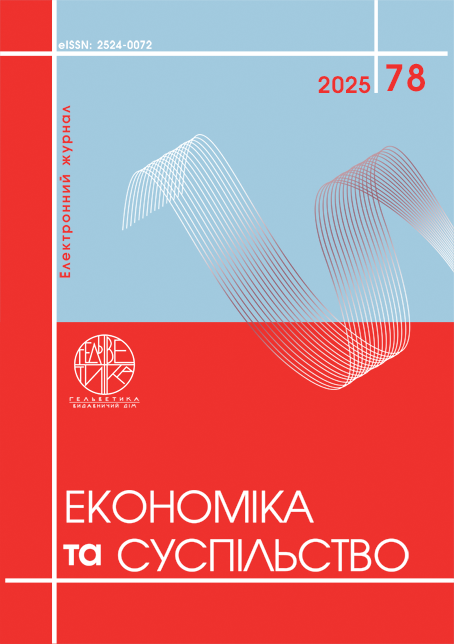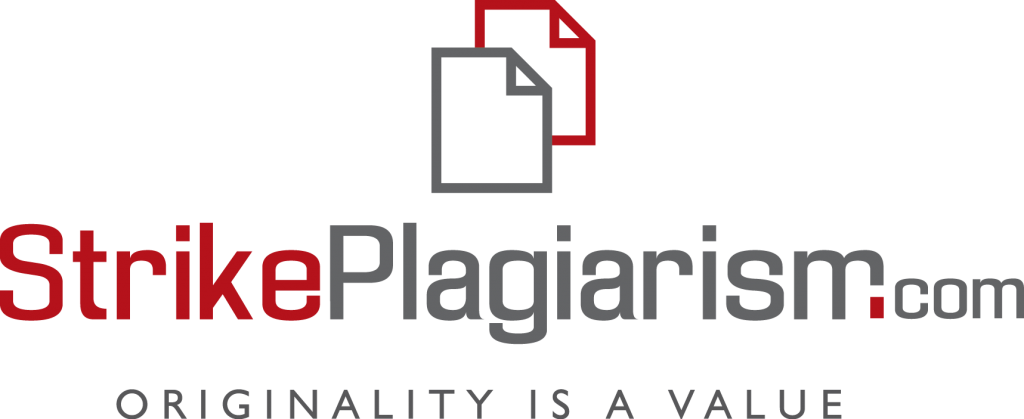STEEP+S-АНАЛІЗ ЯК ІНСТРУМЕНТ МАРКЕТИНГУ ВЗАЄМОДІЇ ЗАКЛАДІВ ВИЩОЇ ОСВІТИ ЗІ СТЕЙКХОЛДЕРАМИ В УМОВАХ ЦИФРОВІЗАЦІЇ
Анотація
Стаття присвячена розвитку теоретико-методичного підходу до аналізу впливу зовнішнього середовища на заклади вищої освіти в умовах цифровізації. Запропоновано використання методу STEEP+S-аналізу, який включає соціальний, технологічний, економічний, екологічний, політичний та безпековий виміри. Обґрунтовано взаємозв'язок між викликами зовнішнього середовища та необхідністю переходу до багатостейкхолдерних моделей взаємодії університетів з партнерами. Систематизовано ключові ризики та можливості для кожного з шести вимірів. Доведено, що STEEP+S-аналіз дозволяє упорядкувати стратегічне планування маркетингу взаємодії ЗВО зі стейкхолдерами та підвищити адаптивність до турбулентного зовнішнього середовища.
Посилання
Волковська Н. Управління інформаційними технологіями в навчальних закладах. Міждисциплінарні експертизи для відновлення і розвитку України: міжнародна науково-практична конференція, м. Київ, 5 червня 2025 р.: зб. матеріалів. Київ : НаУКМА, 2025. С. 150-152.
Журавська О., Житнік Ю., Нагорняк Т. Стратегічне управління розвитком закладу освіти в умовах війни. Міждисциплінарні експертизи для відновлення і розвитку України. Київ : НаУКМА, 2025. С. 156-162.
Berbyuk-Lindström, N., Asatiani, A., & Kononova, N. Exploitation and Exploration of Digital Technologies in Times of War: Experiences of Ukrainian Higher Education Institutions. Proceedings of the 32nd European Conference on Information Systems (ECIS), Paphos, Cyprus. 2024. URL: https://aisel.aisnet.org/ecis2024/track20_adoption/track20_adoption/10/
Brynjolfsson E., McAfee A. The Second Machine Age: Work, Progress, and Prosperity in a Time of Brilliant Technologies. New York: W. W. Norton & Company, 2014. 336 p.
Bryson J. M., Crosby B. C., Bloomberg L. Public value governance: Moving beyond traditional public administration and the New Public Management. Public Administration Review. 2014. Vol. 74, No. 4. P. 445-456.
Castells M. The Rise of the Network Society. 2nd ed. Malden: Wiley-Blackwell, 2010. 656 p.
Drucker P. The Practice of Management. Abingdon-on-Thames: Routledge, 2012. 352 p.
Duchek S. Organizational resilience: a capability-based conceptualization. Business Research. 2020. Vol. 13, No. 1. P. 215-246.
European Demographic Data Sheet 2024 / Wittgenstein Centre for Demography and Global Human Capital, Vienna Institute of Demography, IIASA. Vienna, 2024. 16 p.
Freeman R. E. Strategic Management: A Stakeholder Approach. Boston: Pitman, 1984. 292 p.
Håkansson L., Ford D. How should companies interact in business networks? Journal of Business Research. 2002. Vol. 55, No. 2. P. 133-139.
Hinssen, P. The Network Always Wins: How to Influence Customers, Stay Relevant, and Transform Your Organization to Move Faster than the Market. New York : McGraw-Hill Education, 2015. 256 p.
Kotler P., Kartajaya H., Setiawan I. Marketing 5.0: Technology for Humanity. Hoboken: Wiley, 2021. 256 p.
Mulgan G. The process of social innovation. Innovations: Technology, Governance, Globalization. 2006. Vol. 1, No. 2. P. 145-162.
OECD. Education at a Glance 2023: OECD Indicators. Paris: OECD Publishing, 2023. 516 p.
Porter M. E., Kramer M. R. Creating shared value. Harvard Business Review. 2011. Vol. 89, No. 1-2. P. 62-77.
Robertson, S. L., Beech, J. Promises promises: international organisations, promissory legitimacy and the re-negotiation of education futures. Comparative Education. 2024. Vol. 60, Issue 3. P. 423–440. DOI: https://doi.org/10.1080/03050068.2023.2287938
Schwab K. The Fourth Industrial Revolution. New York: Crown Business, 2016. 192 p.
Senge, P. M. The Fifth Discipline: The Art & Practice of the Learning Organization. New York : Doubleday-Currency, 1990. 464 с.
UNESCO. Education in a post-crisis world: building resilience and equity. Paris: UNESCO, 2023. 285 p.
Vial G. Understanding digital transformation: A review and a research agenda. Journal of Strategic Information Systems. 2019. Vol. 28, No. 2. P. 118-144.
Weber M. The Theory of Social and Economic Organization. New York: Simon and Schuster, 2009. 436 p.
Yliniiva K., Bryan A., Brunila K. ‘The future we want’? – the ideal twenty-first century learner and education’s neuro-affective turn. Comparative Education. 2024. Vol. 60, Issue 3. P. 498–518. DOI: https://doi.org/10.1080/03050068.2024.2363096
Volkovska, N. (2025). Information technology management in educational institutions. In Interdisciplinary expertise for recovery and development of Ukraine (pp. 150-152). Kyiv: NaUKMA.
Zhuravska, O., Zhytnik, Y., & Nahornyak, T. (2025). Strategic management of educational institution development during wartime. In Interdisciplinary expertise for recovery and development of Ukraine (pp. 156-162). Kyiv: NaUKMA.
Berbyuk-Lindström, N., Asatiani, A., & Kononova, N. (2024) Exploitation and Exploration of Digital Technologies in Times of War: Experiences of Ukrainian Higher Education Institutions. Proceedings of the 32nd European Conference on Information Systems (ECIS), Paphos, Cyprus. https://aisel.aisnet.org/ecis2024/track20_adoption/track20_adoption/10/
Brynjolfsson, E., & McAfee, A. (2014). The Second Machine Age: Work, Progress, and Prosperity in a Time of Brilliant Technologies. New York: W. W. Norton & Company.
Bryson, J. M., Crosby, B. C., & Bloomberg, L. (2014). Public value governance: Moving beyond traditional public administration and the New Public Management. Public Administration Review, 74(4), 445-456.
Castells, M. (2010). The Rise of the Network Society (2nd ed.). Malden: Wiley-Blackwell.
Drucker, P. (2012). The Practice of Management. Abingdon-on-Thames: Routledge.
Duchek, S. (2020). Organizational resilience: a capability-based conceptualization. Business Research, 13(1), 215-246.
European Demographic Data Sheet 2024 (2024). Wittgenstein Centre for Demography and Global Human Capital, Vienna Institute of Demography, IIASA. Vienna.
Freeman, R. E. (1984). Strategic Management: A Stakeholder Approach. Boston: Pitman.
Håkansson, L., & Ford, D. (2002). How should companies interact in business networks? Journal of Business Research, 55(2), 133-139.
Hinssen, P. (2015). The network always wins: How to influence customers, stay relevant, and transform your organization to move faster than the market. New York: McGraw-Hill Education.
Kotler, P., Kartajaya, H., & Setiawan, I. (2021). Marketing 5.0: Technology for Humanity. Hoboken: Wiley.
Mulgan, G. (2006). The process of social innovation. Innovations: Technology, Governance, Globalization, 1(2), 145-162.
OECD (2023). Education at a Glance 2023: OECD Indicators. Paris: OECD Publishing.
Porter, M. E., & Kramer, M. R. (2011). Creating shared value. Harvard Business Review, 89(1-2), 62-77.
Robertson, S. L., & Beech, J. (2024). Promises promises: International organisations, promissory legitimacy and the re-negotiation of education futures. Comparative Education, 60(3), 423–440. DOI: https://doi.org/10.1080/03050068.2023.2287938
Schwab, K. (2016). The Fourth Industrial Revolution. New York: Crown Business.
Senge, P. M. (1990). The Fifth Discipline: The Art & Practice of the Learning Organization. New York: Doubleday / Doubleday-Currency
UNESCO (2023). Education in a post-crisis world: building resilience and equity. Paris: UNESCO.
Vial, G. (2019). Understanding digital transformation: A review and a research agenda. Journal of Strategic Information Systems, 28(2), 118-144.
Weber, M. (2009). The Theory of Social and Economic Organization. New York: Simon and Schuster.
Yliniiva, K., Bryan, A., & Brunila, K. (2024). ‘The future we want’? – The ideal twenty-first century learner and education’s neuro-affective turn. Comparative Education, 60 (3), 498–518. DOI: https://doi.org/10.1080/03050068.2024.2363096
Авторське право (c) 2025 Наталія Кононова, Марина Ус

Ця робота ліцензується відповідно до Creative Commons Attribution 4.0 International License.


